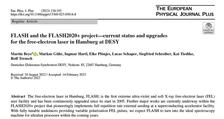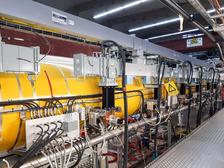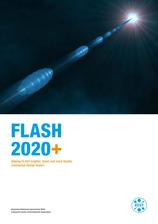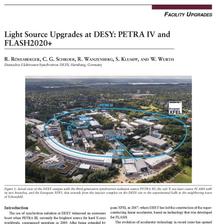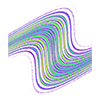'FLASH and the FLASH2020+ project - current status and upgrades for the free-electron laser in Hamburg at DESY' (Reference: The European Physical Journal Plus volume 138, Article number: 193 (2023)).
Within the FLASH strategy, the upgrade program FLASH2020+ will provide ambitious developments for the two FEL lines and the FLASH accelerator which are based on independent operation of the two FEL lines (FLASH1 and FLASH2). Both will be equipped with fully tunable variable-gap undulators and will be able to deliver photon pulses with variable polarization. Tunable undulators at FLASH1 will allow fully parallel operation of the two FEL lines. Up to now this is limited by the fact that the wavelength requested for experiments at FLASH1 determines the beam energy of the linear accelerator. At the same time, this upgrade will increase the available time for user experiments by almost 50%. Furthermore, with the new undulator configuration it will be possible to operate the accelerator at typically only two to three working points in terms of beam energy which will significantly reduce tuning time overhead and increase stability, again increasing the attractiveness and amount of beam time for users.
In addition to these improvements which are based on advancement of the current working conditions, within the FLASH2020+ project new qualities will be added to the XUV and soft X-ray photon beams that are strongly requested by the user community and will bring FLASH again into a leading position to explore new science with FELs: One of the two FEL lines shall be fully externally seeded with the full repetition rate that FLASH can provide in burst mode. The other line will exploit novel lasing concepts based on variable undulator configurations. Together with a small increase in electron beam energy to 1.35 GeV this will extend the wavelength reach of the fundamental harmonics to the oxygen K-edge, in order to cover the important elemental resonances for energy research and the entire water window for biological questions.
Even with this moderate increase in wavelength range FLASH will essentially stay fully complementary to the European XFEL.





